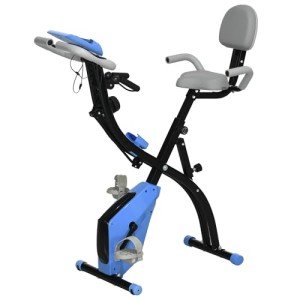What Is Fitness Cycle For Home And Why You Should Consider Fitness Cycle For Home
The Ultimate Guide to Fitness Cycles for Home Workouts
In recent years, the pattern of home workouts has flourished, driven by the pursuit of health, health, and convenience. One of the most popular tools is the fitness cycle. Not just do they use the benefit of exercising at home, but they also supply several benefits that contribute to general fitness and well-being. This short article explores the advantages of utilizing a fitness cycle, the various types readily available, and suggestions on how to select the best one for your requirements.
Advantages of Using a Fitness Cycle
1. Cardiovascular Health
Riding a fitness cycle is an exceptional way to take part in cardiovascular exercise. It elevates heart rate, improving blood circulation and enhancing heart health. Regular cycling can assist avoid heart problem, lowering cholesterol levels, and managing high blood pressure.
2. Low Impact Exercise
Unlike numerous high-impact workouts, cycling is gentle on the joints. This makes it an ideal option for those recovering from injuries or those with joint discomfort, allowing them to participate in efficient aerobic activities without triggering more stress on their bodies.
3. Variable Intensity Levels
Fitness cycles typically come equipped with adjustable resistance levels, allowing users to tailor their workout strength. Whether you are a beginner or a skilled professional athlete, you can flawlessly change the settings to match your fitness objectives.
4. Convenience and Flexibility
A fitness cycle in your home eliminates the need for gym memberships and long travel times. This benefit permits users to fit workouts into their schedules more easily, boosting adherence to a fitness regimen.
5. Versatile Training Options
With a fitness cycle, individuals can engage in different training designs, such as steady-state cycling, high-intensity interval training (HIIT), or endurance training. The flexibility guarantees that workouts remain different and engaging.
Kinds Of Fitness Cycles
When choosing a fitness cycle, it is vital to understand the various types offered in the market. Here are the most typical classifications:
1. Upright Bikes
- Description: Designed likewise to traditional bicycles, upright bikes need users to keep an upright position.
- Pros: Great for mimicing outside cycling; generally more compact.
- Cons: Might be unpleasant for longer rides.
2. Recumbent Bikes
- Description: These bikes have a bigger seat and a reclined position that offers more back assistance.
- Pros: More comfortable for lots of people; appropriate for users with back concerns.
- Cons: Takes up more area; might not supply as extreme a workout as upright designs.
3. Spin Bikes
- Description: Designed for high-intensity exercises, spin bikes resemble those utilized in indoor cycling classes, including a heavy flywheel for smooth pedaling.
- Pros: Offers a tough workout; great for those who take pleasure in group classes.
- Cons: Generally less comfy; not suitable for leisurely cycling.
4. Air Bikes
- Description: These bikes use a fan for resistance, suggesting the more difficult you pedal, the more resistance you encounter.
- Pros: Provides a full-body workout; excellent for high-intensity training.
- Cons: Noisy; needs more effort and stamina.
How to Choose the Right Fitness Cycle
With a lot of choices available, picking the right fitness cycle can be challenging. Here are some crucial elements to think about when making your decision:
1. Space and Size
- Assess just how much space you have available for the cycle. Measure the area and compare it with the dimensions of different bikes.
2. Spending plan
- Fitness cycles vary in cost. Determine a budget plan and search for models that fit within that range while meeting your needs.
3. Features
- Try to find additional features that fit your workout style, such as adjustable handlebars, seat convenience, integrated workout programs, and tracking systems.
4. User Weight Capacity
- Ensure the bike can support the weight of all prospective users. The majority of fitness cycles show a maximum user weight capability, usually ranging from 250 to 400 pounds.
5. Guarantee and Support
- Consider the producer's service warranty and client service options. A good service warranty can protect your financial investment in case of flaws or issues.
Frequently Asked Questions (FAQs)
Q1: Do I need a bike mat for my fitness cycle?
Yes, a bike mat can secure your floor from scratches and help keep the bike steady throughout workouts.
Q2: How often should I ride my fitness cycle?
For optimal health benefits, aim for a minimum of 150 minutes of moderate activity or 75 minutes of energetic activity each week.
Q3: Can fitness cycles aid with weight-loss?
Absolutely! Regular cycling can help burn calories and fat, contributing to weight-loss when coupled with a well balanced diet.
Q4: Are fitness cycles helpful for beginners?
Yes, fitness cycles are terrific for novices as they permit users to begin at a comfy speed, gradually increasing strength as fitness enhances.
Q5: How do I preserve my fitness cycle?
Regularly check and tighten up bolts, clean the frame, and lubricate the moving parts to make sure correct operating and longevity.
A fitness cycle can be an outstanding addition to any home workout regimen, offering many health advantages while offering convenience and versatility. By comprehending the different types readily available and thinking about personal needs, people can choose the ideal design to boost their fitness journey. With conversational tone to promote a routine exercise routine, purchasing a fitness cycle is a step towards a healthier lifestyle. Whether the goal is to improve cardio fitness, reduce weight, or enhance general well-being, a fitness cycle can yield great outcomes when utilized successfully.
